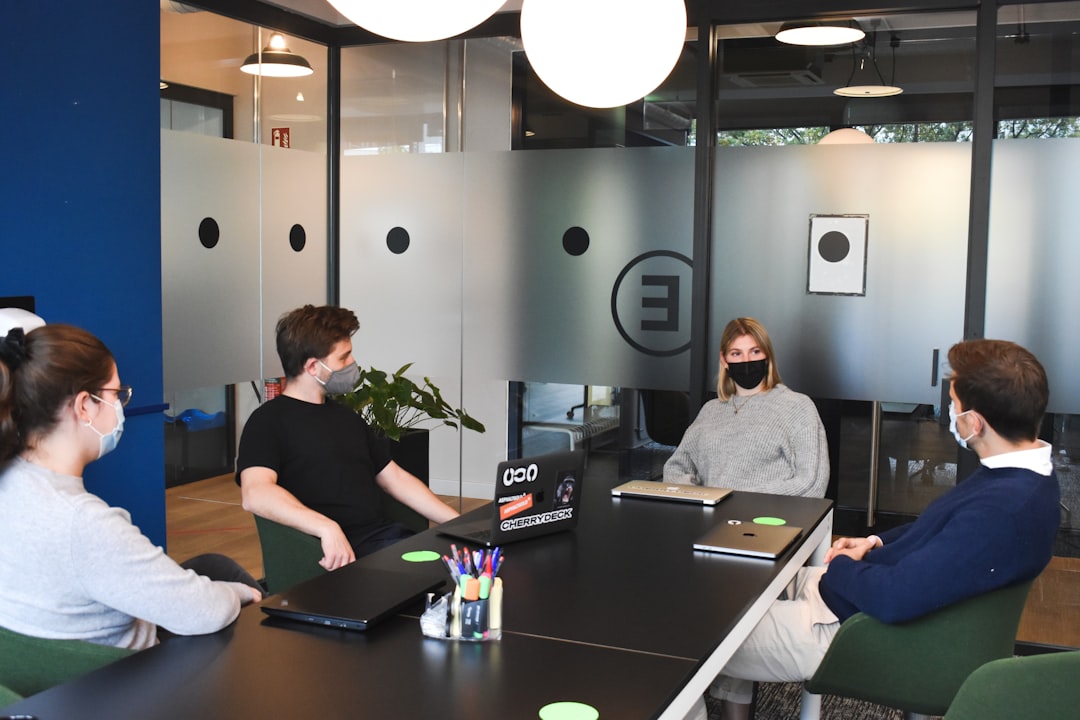What is it about?
A forum among performance and theater practitioners about utopian models for performance and how to build a future for theater, including David Levine, David Consign, Ryan Mcnamara, Caden Manson, Jemma Nelson, Alexandro Segade, Tom Sellar.
Featured Image
Why is it important?
Our findings show that the strategies of theater-making in the current mediated era is imbricated with technology and a critical understanding of the construction of an audience.
Perspectives
This project by My Barbarian transforms the space of an art gallery into a studio for the production of performances and videos, all made in front, and with the participation of, a live audience. A series of improvised sets are built throughout the space depicting scenarios bastardized from genre TV: an emergency room reception desk, a spaceship corridor, a hotel room, a prom dance floor – interstitial passageways between narrative markers. Performers enact scenes created on site by the artists, with the additional labor of the audience, in other studios - like the writers' brainstorm room, the editing suite, the costumer's workshop - making the mode of production evident and central to the performance, corrupting the purity of artistic intention with the desires of the viewers. The products of the performances - edited into serialized videos - are screened on monitors installed within the other sets: i.e., the reception desk will show what is on the news, the hotel room will show the prom on its TV, the prom will project images from the hotel room as if they were high school memories, the space ship corridor will monitor what is happening at the reception desk, etc. The program grows in length and narrative complexity as new performances produce new videos during the run of the exhibition. By casting all who enter in roles that are not characters but positions, the spectacle is made of oneself, and others. Alienation becomes estrangement and a utopian model for making TV (the best and worst medium) is achieved. What follows are fragments of scripts to be performed in the various sets. They were written after the presentation of the project at Prelude.
Alexandro A Segade
Bard College
Group Experience (grpexp) is a web app to facilitate the sharing, collecting, perform- ing, and viewing of contemporary performance scores. It features artist profile creation; score entry (using markup formatting); collection of scores by selecting “favorites”; searching of scores by artists, keywords, or performances; a history of performances for the score; video and rich media links for performances of the score; and sharing of scores or performances to other grpexp experience participants. grpexp seeks to answer Prelude 2015’s query of “what spaces and structures do theatrical artists in the city need today?” with a practical, low-cost, social solution. grpexp provides a space for creators, performers, and audience members to transmit and receive performances. It asks for no subscription fee, has an open submission policy without selection criteria, is open twenty-four hours, and can connect globally. Contemporary Performance, the creators of grpexp, interpret Prelude 2015’s question on structures for artists as a call for creative solutions to the challenge of scarcity in cultural production resources. Although Prelude 2015 remarks that new spaces are in discussion or in planning stages, the question implies a disconnect between artists working in the field of performance (theater, performance, dance, interactive) and the marketplace by which they earn funds to continue producing or initiate new productions. Assuming this is an accurate portrayal of the environment and issues, Contemporary Performance proposes grpexp as a framework through which to explore solutions.
Caden Manson
Carnegie Mellon University
Read the Original
This page is a summary of: What Could We Build, or Is the Future Already Behind Us?, Theater, January 2016, Duke University Press,
DOI: 10.1215/01610775-3619569.
You can read the full text:
Contributors
The following have contributed to this page










